ISO 14001 certification in Kenya
Get Free Consultation
ISO 14001 Certification in Kenya helps organizations demonstrate their commitment to environmental responsibility and sustainability. This internationally recognized standard focuses on establishing an effective Environmental Management System (EMS) that minimizes environmental impact while improving operational efficiency.
By achieving ISO 14001 certification, businesses in Kenya can better manage waste, reduce resource consumption, comply with environmental regulations, and enhance their reputation among environmentally conscious customers and stakeholders. Whether in manufacturing, agriculture, construction, or tourism, ISO 14001 supports organizations in Kenya in aligning their operations with global sustainability goals and contributing to a greener future.
What is ISO 14001 Certification?
ISO 14001 is an internationally recognized standard for Environmental Management Systems (EMS) developed by the International Organization for Standardization (ISO). It provides a structured framework for organizations to manage and reduce their environmental impact, comply with environmental regulations, and promote sustainability.
why ISO 14001 is important in Kenya?
ISO 14001 certification is crucial for businesses in Kenya looking to demonstrate their commitment to sustainability and responsible environmental practices. With growing emphasis on sustainable development from both the government and eco-conscious consumers, obtaining this certification not only enhances your reputation but also ensures compliance with environmental regulations. It can help reduce operational risks, avoid legal penalties, and position your company as a leader in environmental stewardship.
How to Get ISO 14001 Certification In Kenya?

Process to Get ISO 14001 Certification In Kenya
Consultation and Gap Analysis
PopularCert’s specialists assess your organization’s specific requirements and existing systems. We conduct a thorough gap analysis to pinpoint areas needing improvement to meet ISO standards.
Planning, Documentation, and Policy Development
Following the gap analysis, we create a customized implementation plan, define resource needs, and assist in developing necessary policies and documentation. These are seamlessly integrated into your current organizational framework.
Training and Awareness
Comprehensive training ensures your team understands ISO requirements and their responsibilities in maintaining the management system effectively.
Internal Audit and Management Review
We perform internal audits to evaluate system effectiveness and address any non-conformities. A management review aligns the system with your organization’s objectives and ISO standards.
External Certification Audit and Certification
After successfully completing the external audit, your organization will earn ISO certification. This reflects your commitment to excellence, strengthens credibility, and builds lasting trust with customers and stakeholders.
Benefits Of ISO 14001 Certification In Kenya
- Better Environmental Management: It helps businesses manage their impact on the environment more effectively, reducing waste, energy use, and pollution.
- Legal Compliance: ISO 14001 helps businesses stay compliant with local and international environmental laws, preventing costly fines and legal issues.
- Improved Reputation: Businesses with ISO 14001 certification show customers, partners, and stakeholders that they care about the environment, building trust and loyalty.
- Cost Savings: By reducing waste and energy consumption, businesses can lower costs and improve their overall efficiency.
- Competitive Advantage: ISO 14001 certification can help businesses stand out in the market, attracting more eco-conscious customers and gaining an edge over competitors.
- Access to New Markets: Many global clients and partners prefer working with companies that have ISO 14001 certification, opening up opportunities for international business.
- Continuous Improvement: ISO 14001 requires organizations to regularly assess and improve their environmental management practices, ensuring ongoing enhancements and long-term benefits.
- Increased Customer Satisfaction: With a growing focus on sustainability, many customers prefer businesses that demonstrate eco-friendly practices. ISO 14001 certification can enhance customer satisfaction and loyalty.
Types Of ISO Certification In Kenya
- ISO Certification In Kenya
- ISO 9001 Certification
- ISO 14001 Certification
- ISO 45001 Certification
- ISO 22000 Certification
- ISO 27001 Certification
- ISO 17025 Certification
- ISO 13485 Certification
- CE Mark Certification
- ISO 20000-1 Certification
- GMP Certification
- Halal Certification
- SOC-1 Certification
- SOC-2 Certification
Get Free Consultation
Our Clients
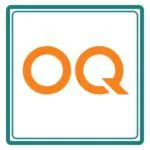




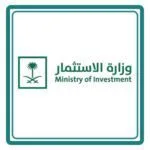
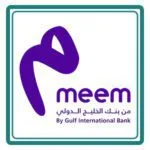
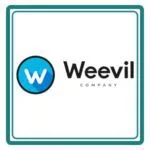
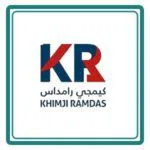


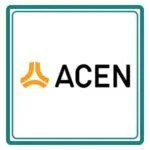




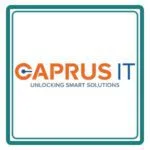

Which Industries Need ISO 14001 Certification In Kenya?
- Manufacturing: Industries such as automotive, textiles, chemicals, and construction materials often have high environmental footprints due to resource consumption, waste generation, and emissions. ISO 14001 helps these sectors manage pollution, reduce waste, and comply with environmental regulations
- Agriculture and Food Processing: This sector includes farms, fisheries, and food production facilities. ISO 14001 assists in managing water usage, soil contamination, and waste disposal, ensuring sustainable practices and compliance with food safety standards like ISO 22000
- Construction and Engineering: Construction projects often involve land disruption, energy use, and material waste. ISO 14001 certification helps firms mitigate environmental risks and adopt sustainable building practices
- Tourism and Hospitality: Hotels, resorts, and tour operators use ISO 14001 to minimize waste, conserve water, and promote eco-tourism, enhancing their appeal to environmentally conscious travelers
- Transport and Logistics: This industry reduces fuel emissions, optimizes routes, and implements green logistics practices with ISO 14001, contributing to lower carbon footprints
Cost Of ISO 14001 Certification In Kenya
The cost of ISO 14001 certification in Kenya varies depending on factors such as the size of your organization, the complexity of your environmental management system, and the specific sustainability goals you need to meet. PopularCert makes the process easier by offering tailored solutions to address your organization’s unique environmental compliance needs. Partnering with PopularCert ensures expert guidance, a seamless certification process, improved environmental performance, and a competitive advantage through adherence to internationally recognized ISO 14001 standards in Kenya. For more information and to apply for your ISO 14001 Certification In Kenya, contact us. We will guide you through the process and provide details on the cost involved to help you get started on your ISO 14001 Certification journey with PopularCert in Kenya.
Why Choose PopularCert For ISO 14001 Certification In Kenya?
Choose PopularCert for ISO 14001 certification in Kenya to ensure your organization meets international environmental standards and achieves remarkable results. Our expert consultants will guide you through every stage, from conducting a thorough gap analysis to successfully achieving certification. We help you implement sustainable practices, optimize your environmental management system, and improve overall efficiency. With PopularCert, you’ll receive customized support that meets your organization’s specific environmental needs, ensuring a smooth certification journey and long-term sustainability. Trust us to enhance your environmental performance, build stakeholder confidence, and open new growth opportunities with ISO 14001 certification.
GET A FREE CONSULTATION NOW
FAQ
What is ISO 14001 certification?
ISO 14001 is a standard for environmental management systems. It helps businesses reduce their environmental impact and meet global sustainability goals.
Why is ISO 14001 important for businesses in Kenya?
ISO 14001 helps Kenyan businesses improve their environmental performance, comply with local regulations, and gain credibility with eco-conscious customers.
How long does it take to get ISO 14001 certification?
The time to get ISO 14001 certification in Kenya varies, but it typically takes a few months, depending on the size and complexity of your business.
What are the benefits of ISO 14001 certification?
The benefits include better environmental management, reduced waste, cost savings, and improved brand reputation among customers and regulators.
How can PopularCert help with ISO 14001 certification?
PopularCert provides expert guidance, helping your business implement effective environmental practices and achieve ISO 14001 certification smoothly and cost-effectively.
